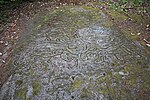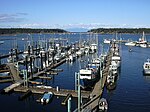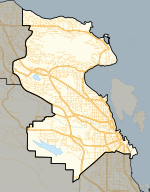Nanaimo River is a river on Vancouver Island, British Columbia, Canada, located near the city of Nanaimo on the island's east coast. Its headwaters are in the Vancouver Island Ranges of central Vancouver Island and its mouth, the Nanaimo River estuary, is at the south end of Nanaimo Harbour in the Strait of Georgia. The estuary is part of the Pacific Estuary Conservation Program.
The river and its drainage basin contain a wide range of industrial and recreational activities. Logging and coal mining were a couple of the earliest industrial operations. While coal mining ceased in the first half of the 20th century, logging continues to be important. Morden Colliery Historic Provincial Park is one of the few places left near the river that links to the region's coal mining history. Due to the lack of arable land, agriculture never became an important industry. In 1931, South Fork Dam was built upstream on the South Nanaimo River to supply water to the city of Nanaimo. In 1974, an additional dam and reservoir were built farther upstream on a tributary of the South Nanaimo River to increase the water supply for the city. In 2000, the South Fork Dam was upgraded to produce Hydroelectricity.
Two major highways cross the river. The Trans-Canada Highway crosses the river just north of Cassidy and farther downstream Highway 19 crosses on the north side of Cedar. At the point where the Trans-Canada Highway crosses the river, the Esquimalt & Nanaimo Railway also crosses it. On the east side of Cassidy, just of the south bank of a major tributary of the river, Haslam Creek, is the Nanaimo AirportAll along the river, and throughout its watershed, there are plenty of lakes and recreational opportunities, including boating, camping, hiking, bungee jumping, and rock climbing. There are still pockets of old growth forest left within easy access to the public, such as at the Nanaimo River Regional Park.






